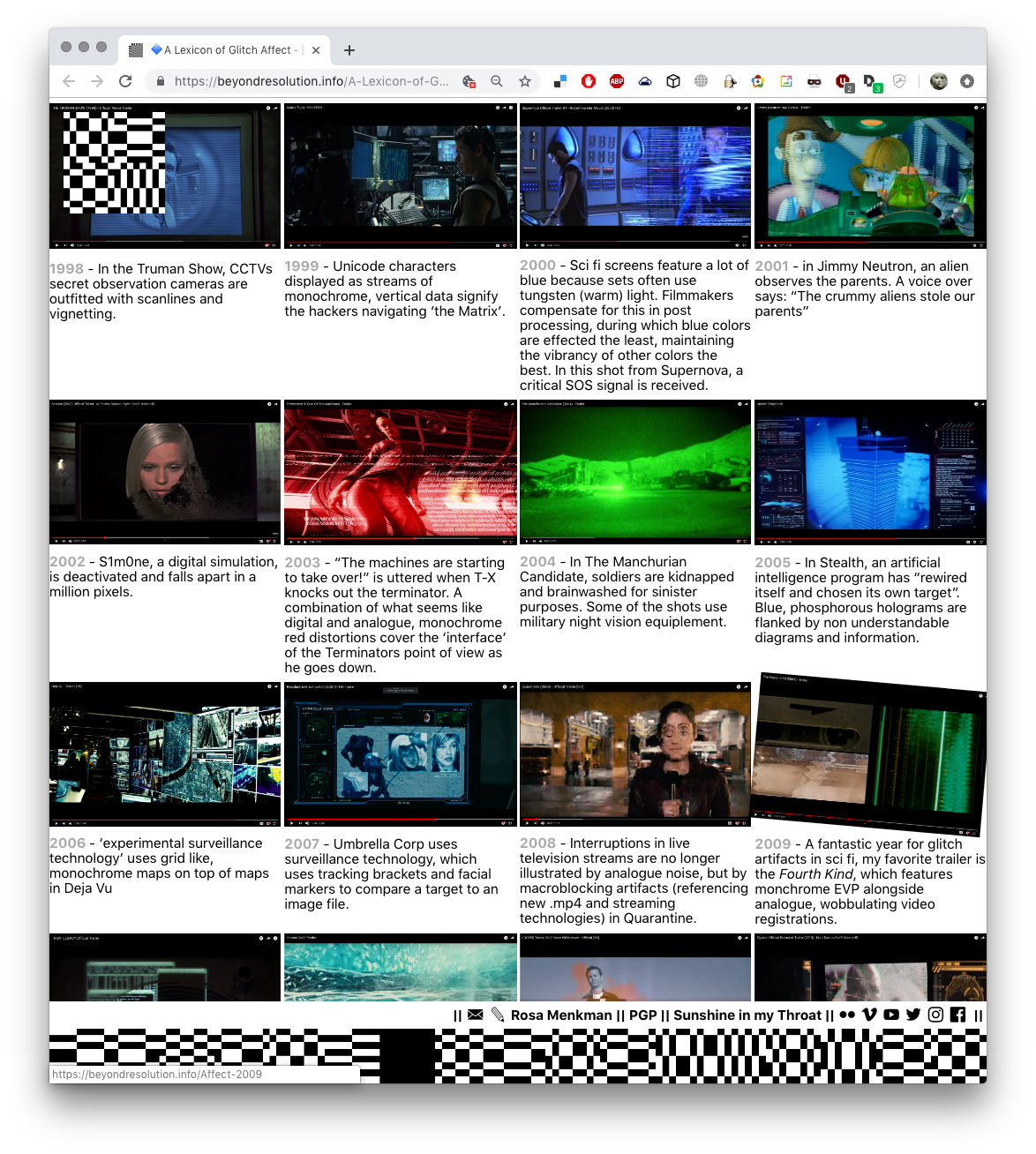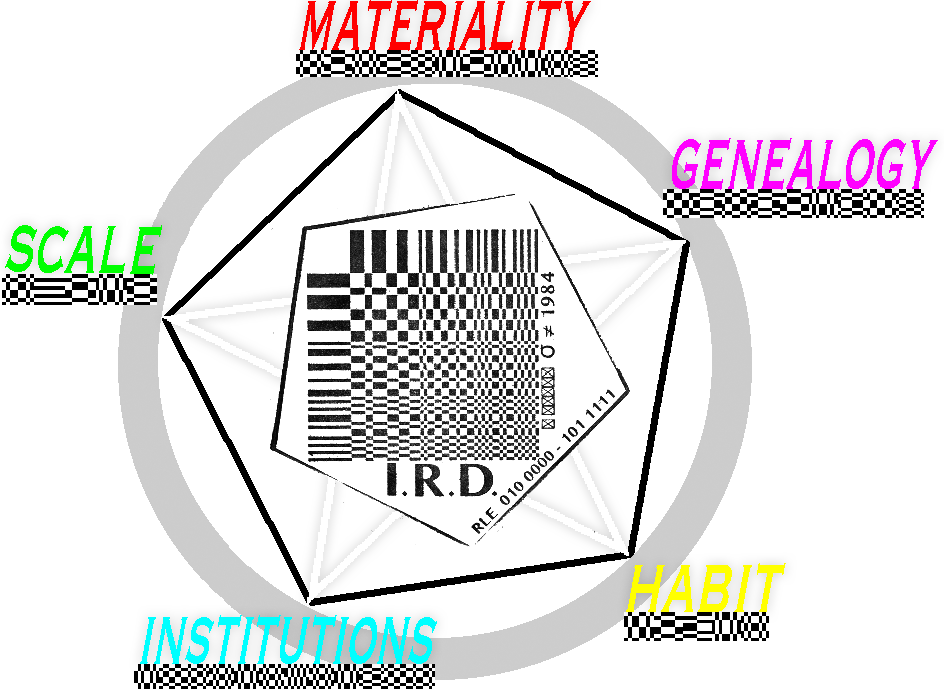
The Lexicon intends to offer an insight into the development of meaning in the aesthetics of distortion in Sci-Fi movies throughout the years, via an analysis of 1200 Sci-Fi Trailers. It will be released in tandem with a video essay.
Starting with trailers from 1978, I reviewed 30 trailers per year to obtain an insight into the development of noise artifacts in Sci-Fi from before the arrival of the home computer, to Sci-Fi adopting the contemporary aesthetics of our ubiquitous digital devices. My source for the trailers is the Internet Movie Database, where I accessed lists of the top-US Grossing Sci-Fi Titles per year. When watching these trailers I took screenshots whenever a distortion occured, and when possible interpreted them. Currently the database includes findings from research done into 630 trailers (1998-2018).
Underneath this very short essay I offer my most interesting findings per year. When you click an image, you get access to the noise artifacts per year.
Glitch Art genre (2019) Every file format consists of a language, or ‘dialect’, according to which it is encoded, often also refered to as a compression algorithm. When we break this organization of data, by for instance glitching or databending, a new utterance or visual expression appears, showcasing the otherwise obfuscated organizations of compression on the surface of the image. These newly emerged images are often directly dismissed as 'garbage' or 'noise artifacts’, but sometimes, the results of these noise artifacts can in fact reveal exciting, unexpected new forms of expression or ‘visual slang’. It is these modes of expression that artists have named the genre of Glitch Art. But, to call glitch a genre suggests it is intelligible and that it follows certain norms or rules.
From its beginnings, glitch art used to exploit medium-reflexivity, to rhetorically question technologies ‘perfect’ use, conventions and expectations. However, paradoxically, over time glitch art has become standardized into a genre that also fulfills certain expectations (oa. to rhetorically question the medium). This reflexive approach inherent in the materiality of the glitch tends to, as Katherine Hayles would assert, re-conceptualize the glitches’ materiality into an interplay between its ‘physical characteristics and its signifying strategies’. But glitch genres perform their reflection on digital materiality not just on a technological level. To really understand a glitch, each level of this notion of (glitch) materiality should be studied: the text as a physical artifact, its conceptual content, and the interpretive activities of artists and audiences.
Distortions in Sci-Fi
Distortions prompt the spectator to engage not only with themes, but also with complex subcultural and meta-cultural narratives and gestures, presenting new analytical challenges. In the Glitch Moment(um) (Institute of Network Cultures, 2010) I wrote that every form of glitch, either breaking a flow, or designed to look like a break from a flow, will eventually become a new fashion. As the popularization and cultivation of the glitch genre has now spread widely, I believe it is important to track the development of these processes in specific case studies and create ‘a lexicon of distortions’. New, fresh research within the field of noise artifacts is necessary. In an attempt to expand on A Vernacular of File Formats, I propose a lexicon that deconstructs the meanings of noise artifacts; a handbook to navigate glitch clichés as employed specifically in the genre of Sci-Fi.
Sci-Fi relies on the literacy of the spectator (references to media technology texts, aesthetics and machinic processes) and their knowledge of more ‘conventional’ distortion or noise artifacts. Former disturbances have gained complex meaning beyond their technological value; with the help of popular culture, these effects have transformed into signifiers provoking affect. For example, analogue noise conjures up the sense of an eerie, invisible power entering the frame (a ghost), while blocky-artifacts often refer to time travelling or a data offense initiated by an Artificial Intelligence. Interlacing refers to an invisible camera, while camera interface esthetics (such as a viewfinders and tracking brackets or markers around a face) refer to observation technologies. Hackers still work in monochrome, green environments, while all holograms are made from phosphorous blue light. And when color channels distort, the protagonist is experiencing a loss of control.
─╟╨╬╥▐╠─▀ ─╟╨╬╥▐╠─▀ ─╟╨╬╥▐╠─▀ ─╟╨╬╥▐╠─▀ ─╟╨╬╥▐╠─▀ ─╟╨╬╥▐╠─▀



No comments:
Post a Comment